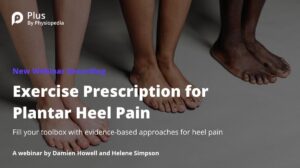Steps to manage first step pain
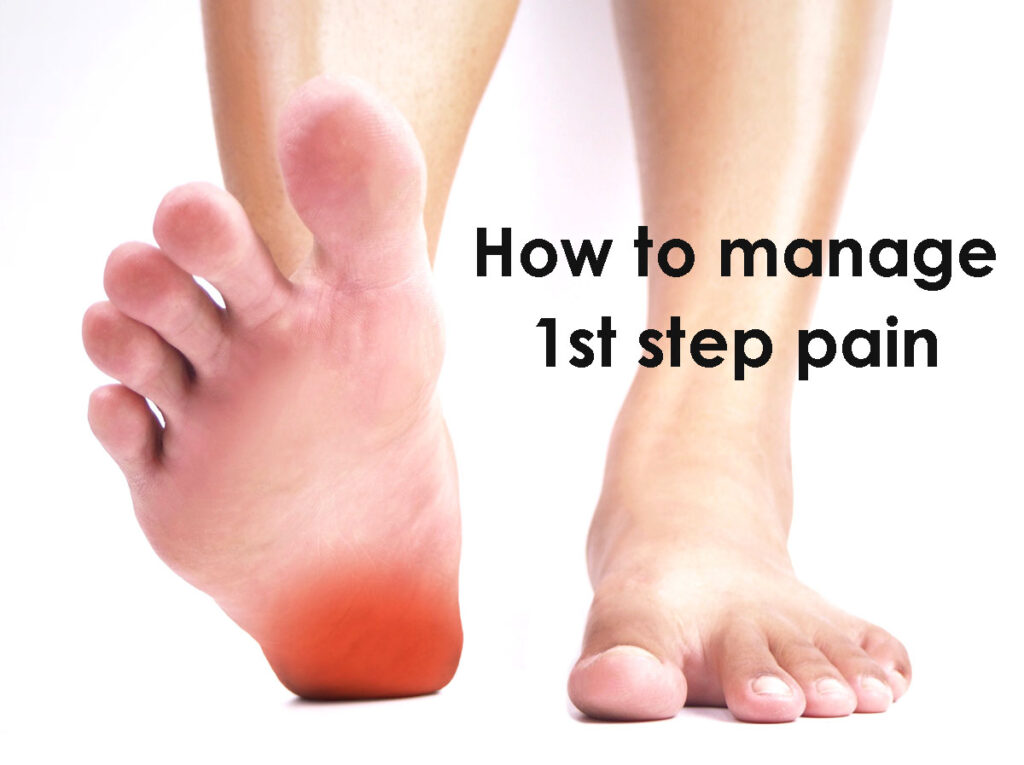
A definitive symptom of plantar heel pain is “first-step pain” First-step pain is felt on the first step out of bed in the morning or after other periods of inactivity such as sitting in meetings or long car drives.
The following are simple steps to manage the 1st step pain:
- Purposeful pandiculation for pain plantar heel pain syndrome
- Isometric before stretch – rock, paper, scissors
- Stretch before step.
First perform a purposeful, conscious, or voluntary pandiculation-type stretch of the foot and ankle before getting out of bed in the morning. Pandiculation is an automatic or involuntary stretching of the soft tissues, which occurs in most animal species. It occurs with transitions between cyclic biological behaviors, especially the sleep-wake rhythm. A yawn is a pandiculation.
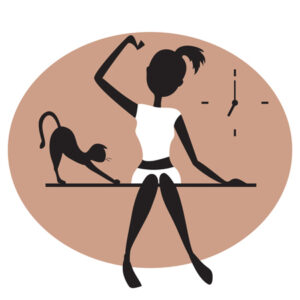
A “good morning stretch” which we instinctively do before getting out of bed in the morning is a pandiculation.
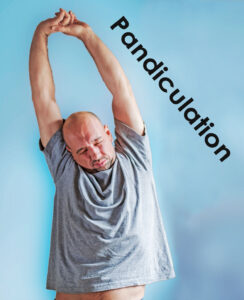
A purposeful or intentional stretching movement can mimic the type of stretching movement that occurs with instinctual pandiculation. It is a brief, gentle, brief, active contraction of muscles.
A purposeful pandiculation of foot and ankle muscles is moving the toes/foot up towards the head gently briefly stretching muscles, tendons, and fascia.
A purposeful pandiculation stretch is more gentle and shorter duration than the typical aggressive stretching recommended which has been oversold for the management of plantar heel pain.
Next, perform a brief warmup using isometric contractions of the intrinsic foot muscles. Three movements of the ankle, foot, and toes are analogous to the hand game “rock, paper, scissors”.
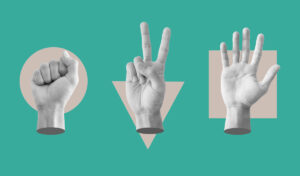
Do “rock, paper, scissors” with your foot and toes before standing and putting your foot on the floor, after sleeping, or after sitting for extended periods of time during the day.
Rock is flexing, curling, crunching the ankle, foot, and toes downward with firm contraction.
Paper is spreading the toes apart. For some individuals, this is a lost skill, but with practice, the ability to spread toes can return.
Scissors is moving the big toe up and little toes down and then reversing with the big toe down and moving the little toes up. For some individuals this is difficult. Interestingly, the performance of this movement is better in one foot the dominant foot-like hand dominance.
Isometric muscle contractions may provide temporary pain relief. Rock paper scissors exercise of the foot and toes can provide a warmup preparing for weight bearing and walking. The rock, paper, scissors movement can even be performed when wearing shoes.
This self-management approach of purposeful pandiculation in combination with isometric strengthening exercises can be utilized for other musculoskeletal pain syndromes such as neck pain, back pain, shoulder pain, and hip pain.
Steps to manage first-step pain
Step 1 – Gentle brief stretch before weight bearing
Step 2 – Warm up foot muscles with isometric exercise
Step 3 – Gentle brief stretch before weight bearing
A on demand-video webinar exploring this topic is available at Plus by Physiopedia entitled “Exercise Prescription for Plantar Heel Pain Webinar”
Use this code – “Damien30” for a 30% discount to access this webinar as well as the more than 500 continuing education webinar courses available at Plus by Physiopedia. This is the link http://bit.ly/DAMIEN30 with the 30% discount code embedded.
The information on this website is not intended or implied to be a substitute for professional medical advice, diagnosis, or treatment. You are encouraged to perform additional research regarding any information contained available through this website with other sources and consult with your physician.
Damien Howell Physical Therapy – 804-647-9499 – Fax: 866-879-8591 At-Home, At Office, At Fitness Facility – I come to you, I do home visits Damien@damienhowellpt.com

